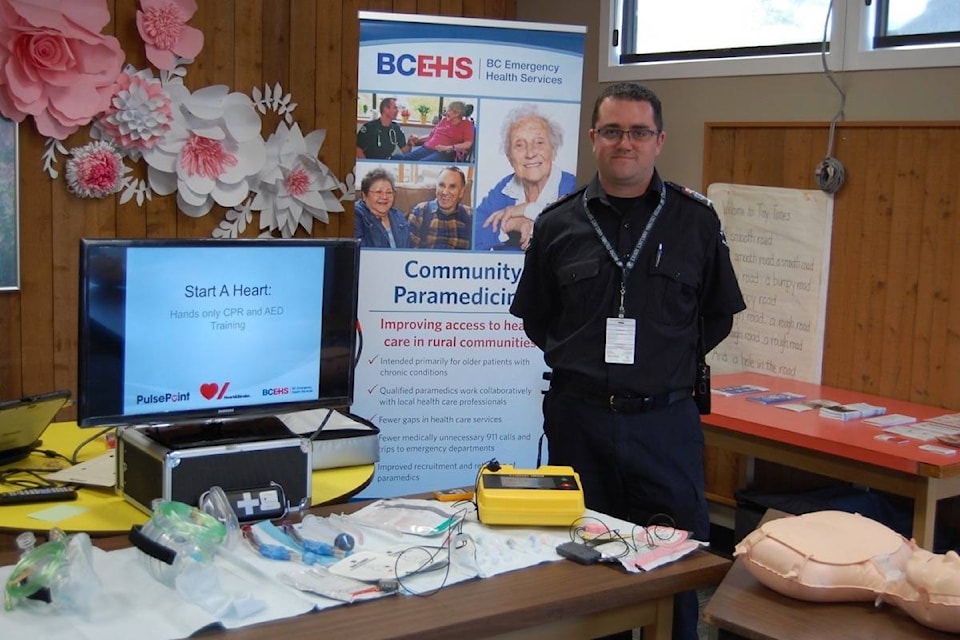Oct. 16 was international “Restart a Heart Day”, and community paramedics in Ashcroft and Clinton presented free classes where community members could learn hands-only CPR (cardiopulmonary resuscitation) and find out what an AED (automated external defibrillator) is and how it works.
“It’s primarily to teach people quality CPR and what a defibrillator is, to enhance the chances of survivability in the event of cardiac arrest,” says Philip Schuberg, the BC Ambulance Service community paramedic in Ashcroft. Hands-only CPR teaches compression, not ventilation, while the AED training teaches people what a defibrillator does and how to use one.
“There are quite a few [AEDs] around town, and it’s good for people to know where they are and how to use them,” says Schuberg. He mentions the PulsePoint app (https://www.pulsepoint.org/), which can be downloaded for free. It not only alerts those who have downloaded it if someone in their immediate area is in cardiac arrest, and gives their location; it also notes the location of nearby AEDs.
Studies show that for every minute a person suffering cardiac arrest does not have help, there is a 10 per cent decrease in survivability. “Unfortunately, in rural B.C. people don’t have those opportunities,” says Schuberg. “Hands-only CPR can more than double the survival rate, but only one in 10 people survive cardiac arrest.”
Schuberg notes that CPR techniques do change, which is why people should refresh their training every two years. “Come in [for training] as often as possible. The more practice you get, the better. And keep practising.”
He explains that the main reason for CPR is to create a rhythm and keep it going. While a heart attack is a circulation problem, cardiac arrest is an electrical problem, which is where an AED comes in. It reads the heart to see if there is a rhythm that can be helped, and jump starts the heart back to an electrical rhythm that can pump blood properly through the body.
“It seems scary, but AEDs will tell you exactly how to use them,” says Schuberg. “They’re very user-friendly, and anyone can use them.
“We want to tell people that CPR and AEDs can save lives, and that everyone—kids and adults—can do it. It’s something everyone should know.”
While the hands-only training might seem minimal, Schuberg says it can help save a life. He adds that there are other practical tips people should know, such as putting your phone on speaker so you can listen to directions, and asking that the person who goes for help comes back so that you know assistance is on its way.
“Some 400,000 people a year in the United States have cardiac arrest outside a hospital,” says Schuberg. “And 89 per cent of those outside of hospital cardiac arrest patients die because no one knows CPR.”
Community paramedics will be offering the “Restart a Heart” classes again in Ashcroft and Clinton. Watch the pages of The Journal for details about where and when.
editorial@accjournal.ca
Like us on Facebook and follow us on Twitter
